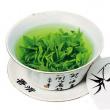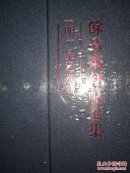
美国语文读本 一版一印
满150可开发票,正版现货,实图拍摄
¥ 20 九品
仅1件
北京朝阳
认证卖家担保交易快速发货售后保障
作者[美]麦加菲 编
出版社上海三联书店
出版时间2011-01
版次1
装帧平装
货号A-624
上书时间2024-11-06
- 店主推荐
- 最新上架
商品详情
- 品相描述:九品
图书标准信息
- 作者 [美]麦加菲 编
- 出版社 上海三联书店
- 出版时间 2011-01
- 版次 1
- ISBN 9787542634122
- 定价 16.00元
- 装帧 平装
- 开本 16开
- 纸张 胶版纸
- 页数 153页
- 字数 99999千字
- 正文语种 简体中文
- 【内容简介】
-
《美国语文读本1(美国原版经典语文课本)》:这套读本的英文原版共分七级,包括启蒙读本和第1-6级。考虑到启蒙读本与第一级篇幅都较少,难易程度也很接近,于是将之合并为第1册,其余2-6级与英文原版相同。这样国内出版的这套读本共包括6册。
《美国语文读本1(美国原版经典语文课本)》从字母表开始,主要侧重于字母的发音与书写、简单的单词与句型,同时强调英文书写,课后附有不少书法练习,让孩子们不仅将英语说得像外国人,而且写得也跟外文书法一样,这是国内英语教学所缺少的一个环节。
This series of schoolbooks teaching reading and moral precepts, originally prepared by William Holmes who was a professor at Miami University McGuffey, had a profound influence on public education in the United States. The eclectic readers, meaning that the selections were chosen from a number of sources, were considered remarkably literary works and probably exerted a greater influence upon literary tastes in the United States more than any other book, excluding the Bible.
It is estimated that at least 120 million copies of McGuffey's Readers were sold between 1836 and 1960, placing its sales in a category with the Bible and Webster's Dictionary. Since 1961 they have continued to sell at a rate of some 30,000 copies a year. No other textbook bearing a single person's name has come close to that mark. McGuffey's Readers are still in use today in some school systems, and by parents for home schooling purposes.
This first reader of 1841 introduces children to McGuffey's ethical code. The child modeled in this book is prompt, good, kind, honest and truthful. This first book contained fifty-five lessons. - 【作者简介】
-
威廉·H·麦加菲,美国著名教育家。1800年出生于宾夕法尼亚州,1826年毕业于华盛顿大学杰斐逊学院。在数十年教育生涯中,他曾担任过迈阿密大学语言学教授,俄亥俄大学校长。自1845年开始任弗吉尼亚大学道德哲学教授。他还帮助组建了俄亥俄州公立学校体系。
早在19世纪初期,麦加菲就意识到,应该给那些孤独的垦荒者和欧洲移民的后代提供普遍的教育,于是他利用自己作为演讲家与教育工作者的天赋,开始为孩子们编写系列教材。这套教材共7册,从学龄前至第6年级。他前后花费了20多年的时间才完成全套教材的编写。这套教材面世后就被美国很多学校选为课本。在75年间销量高达1.22亿,直到今天仍以各种版本流行于西方,被美国《出版周刊》评为“人类出版史上第三大畅销书”,对美国青年的心灵塑造与道德培养产生了史无前例的影响。
William Holmes McGuffey (September 23, 1800 – May 4, 1873) was an American professor and college president who is best known for writing the McGuffey Readers, one of the nation's first and most widely used series of textbooks. It is estimated that at least 122 million copies of McGuffey Readers were sold between 1836 and 1960, placing its sales in a category with the Bible and Webster's Dictionary.
He was born the son of Alexander and Anna (Holmes) McGuffey near Claysville in Washington County, Pennsylvania, which is 45 miles southwest of Pittsburgh. In 1802 the McGuffey family moved further out into the frontier at Tuscarawas County, Ohio. He attended country school, and after receiving special instruction at Youngstown, he attended Greersburg Academy in Darlington, Pennsylvania. Afterwards, he attended and graduated from Pennsylvania's Washington College, where he became an instructor.
He was close friends with Washington College's President Andrew Wylie and lived in Wylie's house for a time; they often would walk the 3 miles to Washington College together.
McGuffey's house in OxfordMcGuffey left Washington College in 1826 to become a professor at Miami University in Oxford, Ohio. A year later in 1827, he was married to Harriet Spinning of Dayton, Ohio, with whom he had five children. In 1829, he was ordained at Bethel Chapel as a minister in the Presbyterian Church. It was in Oxford that he created the most important contribution of his life: The McGuffey Readers. His books sold over 122 million copies. He was very fond of teaching and children as he geared the books toward a younger audience.
In 1836, he left Miami to become president of Cincinnati College, where he also served as a distinguished teacher and lecturer. He left Cincinnati in 1839 to become the 4th president of Ohio University, which he left in 1843 to become president of Woodward College (really a secondary school) in Cincinnati.
In 1845, McGuffey moved to Charlottesville, Virginia where he became Professor of Philosophy at the University of Virginia. A year after his first wife Harriet died in 1850, he married Miss Laura Howard, daughter of Dean Howard of the University of Virginia, in 1851. McGuffey is buried in the university burial ground, in Charlottesville, Virginia. The School of Education at Miami University is housed in McGuffey Hall which is named for him and his home in Oxford is a National Historic Landmark offering tours on weekdays.
- 【目录】
-
lesson 37
what kind of house is this?
do you think it is a schoolhouse, or a church?
it looks like a church, but i think it is a schoolhouse.
i see the boys and girls with their books and slates.
when the bell rings, they will go in.
a good likes to go to school.
lesson 38
“john! e here. be quick, and tell me what kind of bird this is.”
“do you not know, henry?”
“oh, no! what is it?”
“it is a quail.”
“it is the first quail i have seen. is it good to eat?”
“yes; but i should not like to kill it.”
lesson 39
is not this a dear in the crib?
her name is kate, and she has big, blue eyes.
you can not see her eyes, for they are shut.
kate is a good ; but she will cry if she is hurt, or if she is not well.
bess likes to sit near the , and to rock her in the crib.
lesson 40 review
henry black and ned bell live near our house. they go to school, and i see them go by each day with their books and slates. miss may tells the girls and boys that they should be at the schoolhouse when the bell rings.
so henry walks fast, and is fi rst at school. he is a good boy, and wants to keep the rule of the school. ned is not a good boy. i do not think he likes to go to school or to church. i saw him try to kill a quail with a stone. the quail is too quick a bird for that, and ned did not hurt it; but i know that a good would not try to kill a bird.
lesson 96
it is noon, and the school is out. do you see the ren at y? some run and jump, some y ball, and three little girls y school under a tree. what a big room for such a small school!
mary is the teacher. they all have books in their hands, and fanny is rea. they are all good girls, and would not be rude even in ying school.
lesson 100
one evening frank’s father said to him, “frank, would you like to go with me to catch some fish?”
“yes; may i go? and with you, father? ”
“yes, frank, with me.”
“oh, how glad i am!”
here they are, on the bank of a river. frank has just pulled a fine fish out of the water. how proud he feels! see what a nice, quiet spot they have found. frank has the stump of a big tree for his seat, and his father sits on a log near by. they like the sport.
点击展开
点击收起
— 没有更多了 —



















以下为对购买帮助不大的评价